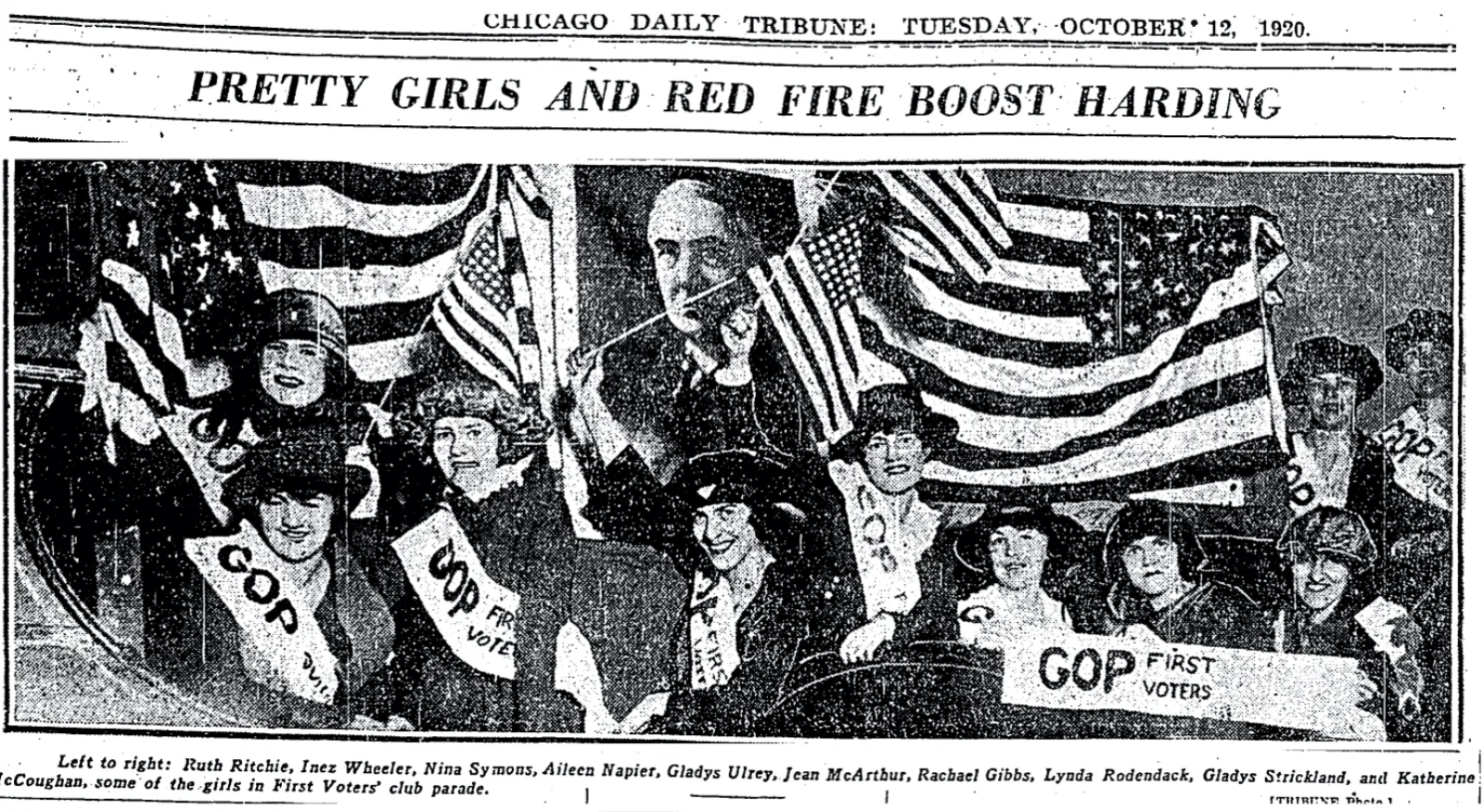“On the 1920 Campaign Trail” is a series of blog posts documenting the 1920 election season. Paul Durica, the Newberry’s former Director of Exhibitions and curator of Decision 1920: A Return to “Normalcy,” is reporting and commenting on the campaigns of Warren G. Harding (Republican), James M. Cox (Democrat), and Eugene V. Debs (Socialist).
Paul will track the ups and downs building up to the election, as the candidates appeal to voters during a time that parallels our own: barely removed from a global pandemic and riven by unrest around racial and economic inequities.
On a cold, overcast afternoon in Marion, Ohio, close to five thousand women from across the country gathered around the front porch of Senator Warren G. Harding as he announced his desire to create a new cabinet-level position that he hoped to fill with one of their own. This proposed “department of public welfare,” would safeguard women and children at work and within the home, and was in keeping with the themes of what was dubbed “Social Justice Day.”

Before the Senator’s speech, many of the women in attendance had paraded down the streets of Marion, including a delegation from Chicago, declared by the somewhat biased Tribune, the “most colorful group in the parade, the girls of all nations in costumes,” all of whom were “daughters of citizen born in the old countries.” And it was a Chicagoan, Margaret Dreier Robins, labor leader and head of the Women’s Trade Union League, who introduced the Senator to the “waiting throng” in front of his home.
The parade, speeches, and fanfare acknowledged the important role women would play in the upcoming election, the first where all across the country they could cast a ballot for their preferred candidate for President of the United States. To prepare women for this new responsibility, many women’s suffrage organizations underwent a change in focus. A day after the gathering in Marion, at the Congress Hotel, the Chicago Political Equality League formally became the League of Women Voters of Illinois.
While the ratification of the 19th Amendment in August had made voting a legal possibility, many women, particularly women of color, continued to face barriers to exercising the franchise. Among the thousands who had come to Marion were many prominent Black women, such as L.C. Fleming, head of the “colored women’s department” of the Republican National Committee, and Maggie Walker, president of a bank in Richmond, Virginia, who called upon Harding and his party to uphold their rights.
Despite the strong showing for Harding in Marion, his Democratic opponent, Ohio Governor James M. Cox was not lacking in support from newly enfranchised women voters. Several from Chicago announced that they would “stump” for him in places as far flung as Kansas City and Boston in the final weeks of the campaign, while Lucille Smith of the “naturalized citizen’s bureau of the central western Democratic headquarters,” designed a unique hat to make sure Cox supporters were easily recognizable. Not to be outdone, Republican women took to wearing their own special hat, which incorporated an illustration of the party symbol, an elephant, by the Chicago Tribune political cartoonist John T. McCutcheon.
About the Author
Paul Durica is the former Director of Exhibitions at the Newberry.